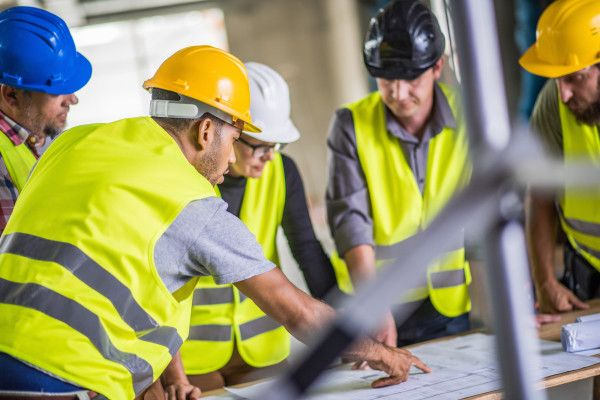Ensuring the safety of your home from gas-related emergencies is crucial for protecting your family and property. Gas leaks and other gas-related issues can lead to serious hazards, including explosions, fires, and health risks. Creating a comprehensive gas safety plan, including obtaining a London Gas Certificate, is an essential step in safeguarding your home. In this blog, we’ll guide you through the process of developing a gas safety plan to ensure you’re well-prepared for any emergencies that may arise.
Understanding Gas Safety
Before diving into the specifics of creating a gas safety plan, it’s important to understand the basic principles of gas safety. Natural gas and propane are commonly used in homes for heating, cooking, and hot water. While these gases are generally safe when used correctly, they can be dangerous if there is a leak or if the gas appliances are not maintained properly.
Gas leaks can lead to harmful explosions and fires, and they also pose health risks due to the potential for carbon monoxide poisoning. Carbon monoxide is a colorless, odorless gas that can be fatal if inhaled in large quantities. Ensuring that your home is prepared for these risks is essential for maintaining a safe living environment.
Developing a Gas Safety Plan
Creating a gas safety plan involves several key steps. Here’s how to get started:
Identify and Inspect Gas Appliances
The first step in creating a gas safety plan is to identify all gas appliances in your home. This includes stoves, ovens, heaters, and water heaters. Each of these appliances should be inspected regularly to ensure they are in good working order. Look for any signs of wear and tear or malfunction, such as rust, cracks, or unusual noises.
Regular maintenance is crucial. Schedule annual inspections with a qualified technician who can check for leaks and ensure that your appliances are operating safely. This can help prevent potential hazards before they become serious problems.
Install Gas Detectors
Gas detectors are essential for detecting leaks before they become dangerous. Install gas detectors in key areas of your home, particularly near gas appliances and in sleeping areas. These detectors can alert you to the presence of gas, giving you time to take action before a situation escalates.
Make sure to follow the manufacturer’s instructions for installation and maintenance. Test the detectors monthly and replace batteries or the entire unit according to the manufacturer’s recommendations.
Create an Emergency Plan
Having an emergency plan is vital for ensuring the safety of everyone in your home. Develop a clear plan that outlines what to do in the event of a gas leak or other gas-related emergency. Your plan should include:
- Evacuation Routes: Identify multiple exits from your home and ensure that everyone in your household knows the routes to take in case of an emergency. Make sure exits are clear and accessible.
- Meeting Points: Designate a safe meeting point outside your home where everyone should gather after evacuating. This helps ensure that everyone is accounted for and provides a central location for emergency responders.
- Emergency Contacts: Keep a list of emergency contacts, including your local gas utility company and emergency services. Ensure that everyone in your household knows how to reach these contacts quickly.
Educate Your Household
Everyone in your home should be aware of the gas safety plan and understand how to respond in case of an emergency. Conduct regular safety drills to practice your evacuation plan and familiarize everyone with the procedures.
Explain the importance of gas safety to all household members, including the signs of a gas leak, such as the smell of gas, hissing sounds, or dead vegetation around the gas line. Make sure everyone knows how to operate gas detectors and recognize their alerts.
Maintain Proper Ventilation
Proper ventilation is key to preventing gas buildup and reducing the risk of carbon monoxide poisoning. Ensure that your home is well-ventilated, especially in areas where gas appliances are used. This helps to disperse any gas that might leak and prevents dangerous concentrations from forming.
Regularly check and clean ventilation systems to ensure they are functioning correctly. If you have a chimney or flue, make sure it is inspected and cleaned regularly to prevent blockages.
Know How to Shut Off Gas Supply
In the event of a gas leak, it’s crucial to know how to quickly shut off the gas supply to your home. Locate the main gas shut-off valve, which is typically found near the gas meter. Familiarize yourself with its location and ensure that everyone in your household knows how to operate it.
Instruct all household members on how to turn off the gas supply in case of an emergency. Remember to only attempt to shut off the gas if it is safe to do so; if there is a significant leak or you are unsure, evacuate the premises and call for professional help immediately.
Conclusion
Creating a gas safety plan for your home is an important step in protecting your family and property from potential hazards. By understanding the basics of gas safety, inspecting your appliances, installing detectors, and developing a comprehensive emergency plan, you can significantly reduce the risk of gas-related emergencies.
Educating your household and maintaining proper ventilation further enhances your safety measures. Knowing how to shut off the gas supply in an emergency is crucial for preventing further damage or danger.By following these steps and staying vigilant, you can ensure that your home remains a safe and secure environment. Regular maintenance and preparedness are key to handling any gas-related issues effectively. Stay proactive about gas safety, and you’ll be better equipped to protect your loved ones from potential emergencies, If you want to stay updated with posts like this, please follow us on MAGAZINE SCORE.








